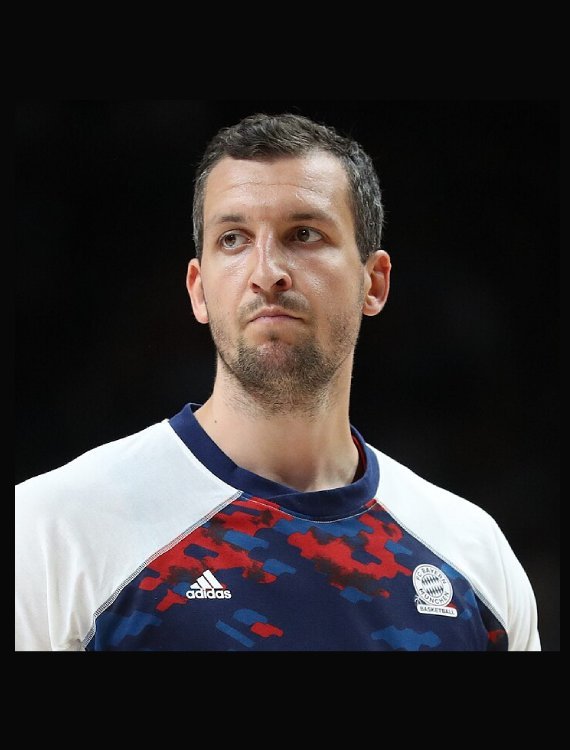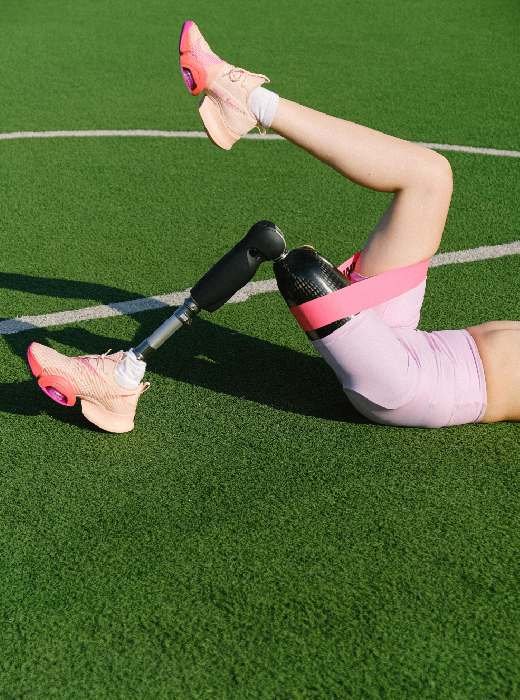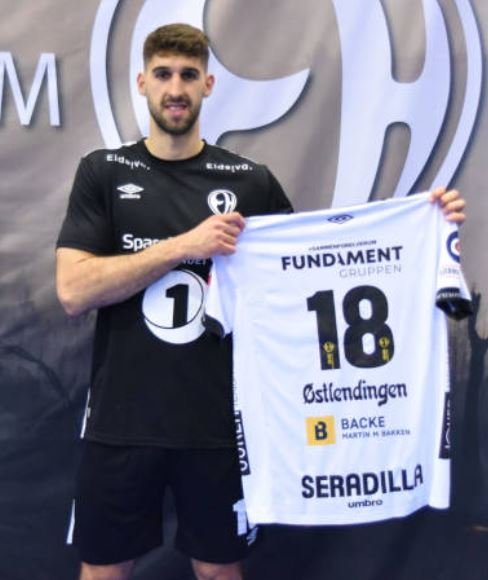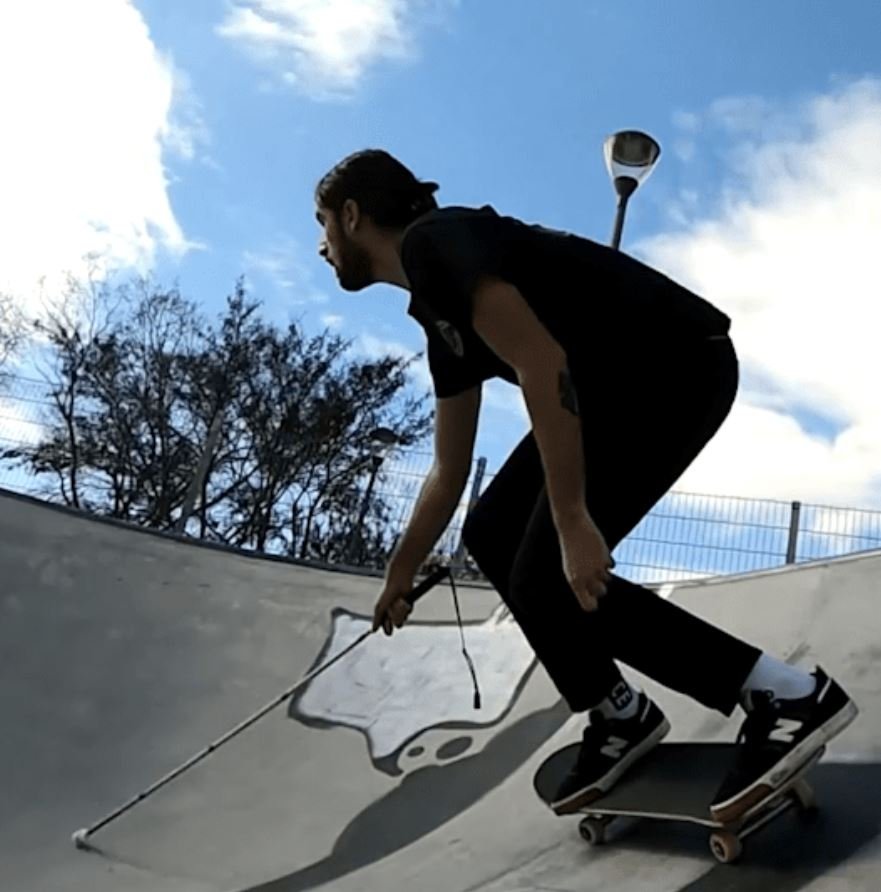In the cavernous Audi Dome in Munich, a familiar figure in a red jersey rises from the bench. The crowd, sensing the moment’s significance, begins to stir. As Paul Zipser steps onto the court against Hamburg Towers in March 2022, the applause builds to a roar that transcends the usual enthusiasm for a substitution. This isn’t just another player entering a game – it’s the culmination of a nine-month battle that began not on the basketball court, but in a hospital bed, fighting for his life.
“It was a roller coaster ride,” Zipser would later say, in what might be the understatement of the decade.
To understand the weight of this moment—and why an entire arena erupted for a player who would log just a handful of minutes – you need to know the extraordinary path that led here. It’s a journey that winds from a picturesque German university town to the bright lights of Chicago’s United Center, only to veer dramatically toward operating tables and painstaking rehabilitation, before finally returning full circle to where it all began.
Paul Zipser’s Heidelberg Beginnings
Basketball has long held a special place in Heidelberg, a city better known to tourists for its castle and university than its jump shots. Yet this picturesque town nestled alongside the Neckar River has maintained a historically successful basketball team, providing the perfect backdrop for a lanky kid with outsized dreams.
Born with an extra bone in his foot – an anatomical quirk that would foreshadow later struggles – Zipser began his professional career in 2010 with his hometown USC Heidelberg. The local kid showed flashes of promise, averaging a respectable 7.9 points per game in the 2011-12 season. His trajectory, however, wasn’t straight upward. An injury limited him to just two games the following season, offering an early test of resilience.
But talent rarely stays hidden for long. On January 18, 2013, Bayern Munich – Germany’s basketball powerhouse – saw enough potential to offer the young forward a four-year contract. For Zipser, this wasn’t just a new team; it was entry into German basketball’s elite circle.
The Bavarian Rise
The move to Bayern wasn’t an immediate fairy tale. Still nursing that foot injury, Zipser initially had to prove himself through the club’s second team. This period of grinding away from the spotlight forged a toughness that would serve him well in the years ahead.
His patience paid dividends. By 2014, he was celebrating a German BBL championship with Bayern’s first team. The following season offered more growth, but it was the 2015-16 campaign where Zipser truly announced himself to the basketball world. Averaging 7.1 points and 3.6 rebounds per game, he claimed the prestigious BBL Best German Young Player award and turned heads as MVP at the 2016 Adidas Eurocamp.
Suddenly, attention was coming from across the Atlantic.
The NBA is Calling: Windy City Dreams
When NBA draft night 2016 rolled around, Zipser watched from Europe as 47 names were called before his. Then, with the 48th pick, the Chicago Bulls selected the German forward, turning a childhood fantasy into reality.
“Getting drafted was a dream come true,” Zipser would later reflect. “As a kid playing basketball in Germany, the NBA feels like another universe.”
Transitioning to the world’s premier basketball league proved challenging but rewarding. His rookie season offered promising glimpses – a first start in January 2017, a season-high 21 points in the regular-season finale, and meaningful minutes in a playoff series against the Boston Celtics where he averaged an impressive 7.3 points per game.
The NBA demanded adjustments – faster pace, stronger players, different defensive schemes – but Zipser showed he belonged. Over two seasons with Chicago, he appeared in 98 games, averaging 4.7 points and 2.6 rebounds. Not superstar numbers, but solid production for a late second-round pick navigating a new continent and culture.
His second season brought challenges. Playing time decreased as Chicago prioritized other young players in their rebuilding process. That stubborn foot issue flared up again, eventually requiring surgery in May 2018. Two months later, the Bulls waived him – a business decision that left Zipser at a crossroads.
“I had some not-so-good experiences,” Zipser told reporters with characteristic understatement about his departure from Chicago. The sting of being released, however, wouldn’t be the toughest challenge he’d face.
The European Return
After a brief stint with San Pablo Burgos in Spain, Zipser found himself back where he had flourished before—signing with Bayern Munich in August 2019. The homecoming proved sweet.
“I’m really happy to be back,” Zipser said upon his return. “FC Bayern is my club, with all the people I know and the fans. I know what to expect, and that makes it easier to hit the ground running.”
Hit the ground running he did. The 2019-20 season saw him average 8.5 points per game in EuroLeague play, followed by an even more impressive 9.1 points per game the following year. Bayern secured a German Cup title in 2021, with Zipser playing a significant role. His career had found stable footing again.
Then, without warning, everything changed.
When Basketball Becomes Secondary: Zipser’s Diagnosis
The symptoms started subtly. During a German league semifinal game in June 2021, something felt off. Zipser felt “a little odd,” but pushed through. The next morning, the symptoms intensified, prompting immediate hospitalization.
The diagnosis was devastating – a brain hemorrhage caused by a cavernoma, an abnormality affecting blood vessels in the brain. For a professional athlete accustomed to controlling his body with precision, the sudden betrayal by his own anatomy was particularly cruel.
Emergency surgery followed. Doctors successfully removed the affected angioma, but the immediate concern wasn’t basketball – it was life itself.
“It was very serious,” Bayern head coach Andrea Trinchieri would later reveal. “It was a fight for his life.”
Paul Zipser’s Hardest Comeback: Recovery After Brain Hemorrhage
Recovery from brain surgery presented challenges that made basketball rehabilitation seem trivial by comparison. Zipser battled balance problems, persistent headaches, and occasional numbness. Basic movements required conscious focus. Skills that had once been automatic reflexes needed relearning.
“I had to retrain my body to do things that used to be natural,” Zipser explained in an interview with BasketNews. “My brain needed to create new pathways.”
Throughout this grueling process, Zipser benefited from an exceptional support system. His family provided emotional anchoring, particularly his wife, who witnessed the daily struggles away from the public eye. Bayern Munich demonstrated exceptional loyalty, extending his contract despite uncertainty about his playing future – a gesture that spoke volumes about both the organization’s character and their belief in Zipser’s resilience.
“There were many moments when I thought I wouldn’t make it back,” Zipser admitted. “But then there were days when everything clicked again, and those moments kept me going.”
The rehabilitation trajectory wasn’t linear. Progress arrived in spurts, often followed by frustrating plateaus or temporary regressions. Each milestone – walking without assistance, light shooting drills, joining team practices – represented tremendous effort and determination.
“This experience changes your perspective,” Zipser reflected. “Basketball is still incredibly important to me, but I gained appreciation for simply being healthy enough to play.”
The Emotional Return
When March 2022 arrived, approximately nine months after surgery, Zipser’s doctors and Bayern’s medical staff delivered news that once seemed improbable: he was cleared to play.
The moment he checked into that game against Hamburg Towers transcended sport. Teammates who had witnessed his daily struggles fought back emotions. Coaches who had wondered if they’d ever again write his name on a lineup card applauded alongside fans. Opponents offered respectful acknowledgments.
Shortly after his BBL return, Zipser made another milestone appearance in the EuroLeague against Panathinaikos. Though his statistics were modest as he eased back into competition – he averaged just 2.8 points, 1.1 rebounds, and 0.1 assists during the 2022-23 season – the numbers told only a fraction of the story.
“Having Paul back on the court is a victory regardless of the scoreboard,” Trinchieri said after Zipser’s return. “It’s a triumph of human spirit.”
That spirit continued to fuel Zipser as he contributed to Bayern winning another German Cup title in 2023. Though his role was smaller than before his health crisis, his presence alone inspired teammates and fans alike.
Paul Zipser Comes Full Circle in Heidelberg
In July 2023, Zipser’s basketball journey came full circle when he signed with his hometown club, MLP Academics Heidelberg. Eleven years after first departing as an ambitious prospect, he returned as a veteran with an extraordinary story of resilience.
“Coming back to where it all started feels right,” Zipser said upon signing. “Heidelberg shaped me as a player and person. Now I can bring everything I’ve learned and experienced back home.”
His 2023-24 season with Heidelberg has been modest statistically – 2.1 points and 1.3 rebounds across 15 appearances – but his impact extends far beyond box scores. Younger teammates benefit from his experience and perspective. Local fans celebrate the return of a hometown hero whose journey embodies perseverance against astronomical odds.
“Paul doesn’t need to score 20 points to be valuable,” says his current coach. “The wisdom and resilience he brings to our team is immeasurable.”
Beyond the Numbers: The True Legacy of Paul Zipser’s Comeback
Basketball careers are typically evaluated through statistics and achievements – points scored, championships won, contracts signed. By those traditional metrics, Paul Zipser’s journey includes notable highlights: German BBL championships, an NBA career, EuroLeague performance, and German national team representation.
Yet his most profound achievement transcends basketball entirely. Recovering from life-threatening brain surgery to return to professional sports represents a triumph of human will that few athletes ever face. That he managed this comeback while maintaining perspective and humility only adds to the accomplishment.
“Basketball gave me structure during recovery,” Zipser explained in Bayern’s podcast “OPEN COURT”. “Having that goal to return kept me focused during the toughest days.”
His journey offers lessons that resonate beyond sports: the importance of perseverance, the value of supportive communities, the perspective gained through adversity, and the remarkable capacity of the human body and spirit to recover from devastating setbacks.
When asked what advice he would give others facing seemingly insurmountable challenges, Zipser doesn’t hesitate: “Take it day by day. Small victories add up. And surround yourself with people who believe in you, especially on days when believing in yourself feels impossible.”
Why Paul Zipser’s Comeback Inspires Us All
At 31, Paul Zipser’s basketball future remains unwritten. His playing days might stretch for several more seasons or conclude sooner than he once imagined. Either way, his legacy is secure – not because of championships or statistics, but because he showed that coming back from the brink is possible.
In a sports world obsessed with championships and statistics, Paul Zipser reminds us that sometimes, simply returning to the court represents the greatest victory of all.
If you found Paul Zipser’s journey inspiring, you’ll love the story of Ellie Black — a Canadian gymnastics legend who has battled back from multiple injuries to remain a force on the world stage. 
Photo by: Von Sandro Halank, Wikimedia Commons, CC BY-SA 4.0, CC BY-SA 4.0, https://commons.wikimedia.org/w/index.php?curid=119443446he




